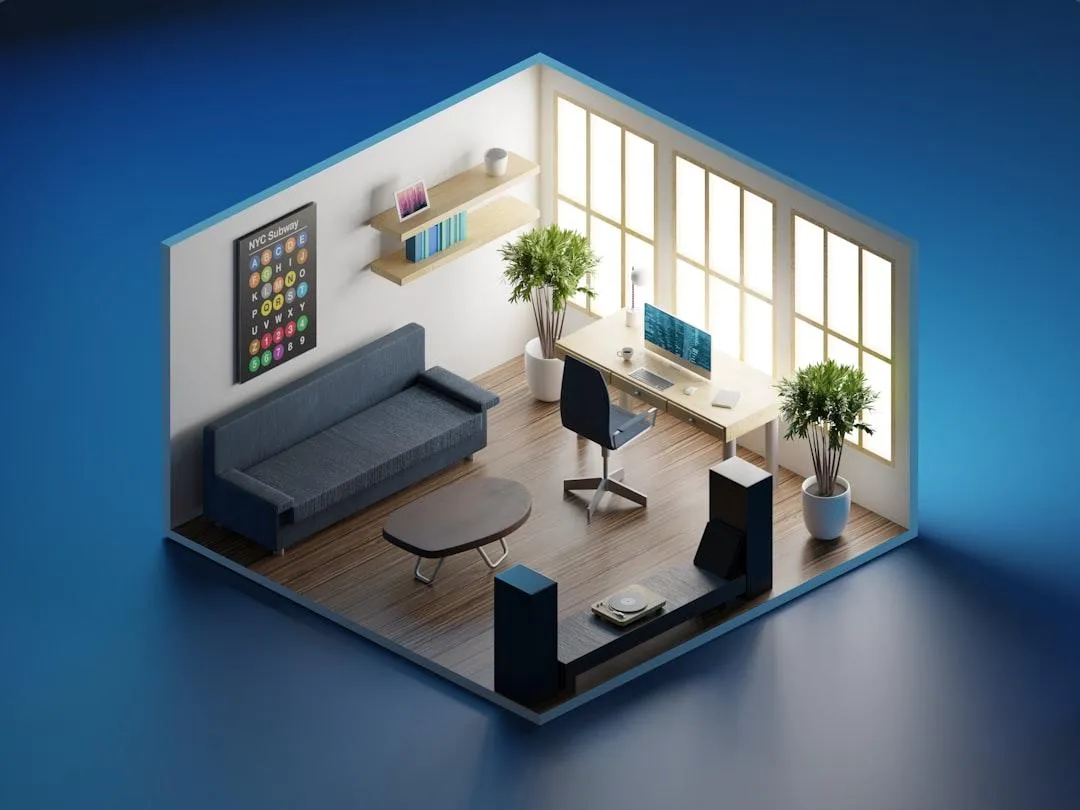
The Secrets of Productive People: How to Arrange Your Workspace for Optimal Energy Flow
The Secrets of Productive People: How to Arrange Your Workspace for Optimal Energy Flow
In today's constantly connected world, productivity has become a rare commodity. While we search for perfect time management techniques and productivity apps, we often overlook the fundamental element of success – our physical environment and the energy flow within it.
The Invisible Success Factor
The world's most productive people – from tech visionaries to creative geniuses – share one common secret: they pay extraordinary attention to their work environment. It's not just about aesthetics or organization. It's about creating a space where energy can flow freely and where our body feels in harmony.

The "Energy Drain" Phenomenon
Did you know that the average office contains dozens of electronic devices that constantly emit electromagnetic fields (EMF)? These waves can disrupt the natural communication between our body's cells, leading to:
Faster fatigue
Reduced ability to concentrate
Slower decision making
Increased stress
Productive people intuitively or consciously create environments that minimize these disruptive influences.
5 Principles for Arranging Space for Optimal Productivity
1. Strategic Placement of Electronic Devices
The most productive people follow the "distance rule." Routers, printers, chargers, and other devices are placed at least 6 feet from the main workspace. The computer is set up so the monitor is at an optimal distance from the eyes, reducing not only eye strain but also exposure to electromagnetic radiation.
2. Natural Elements as Energy Stabilizers
Research by NASA shows that plants not only clean the air but also help balance the electromagnetic field in the room. Productive people often place in their workspace:
Green plants, especially ferns and succulents
Natural materials like wood, stone, or cotton
Natural elements such as Himalayan salt lamps or small fountains
3. Light Harmony
The most successful professionals realize that lighting is not just about visibility, but also about aligning our natural circadian rhythms:
Morning: Bright, bluish light promoting alertness
Afternoon: Medium light intensity
Evening: Warm, yellow light that doesn't disrupt sleep
Many use smart lighting systems that automatically adjust the temperature and intensity of light throughout the day.
4. Activity and Rest Zones
Productive people create separate zones for different types of activities:
High concentration zone: A simple space with limited electronics
Creative zone: A place with inspirational elements and natural light
Relaxation zone: A space completely without electronics where the brain can fully recover
By moving between these zones during the day, they maintain high energy levels and prevent mental exhaustion.

5. Harmonizing Energy Fields
Finally, the most interesting part – truly productive people actively balance the energy fields in their workspace:
Regular ventilation to restore air quality.
Using natural sounds (forest murmurs, birdsong, specific music proven to enhance focus such as binaural beats)
Helpful tools like BionicBandOriginal, which help harmonize the interaction between electronic devices and the human body
Practical Implementation Plan
How can you apply these secrets in your own workspace? Start with these three steps:
Conduct an energy inventory: List all electronic devices in your workspace and move as many of them as possible away from your main work area.
Create a natural barrier: Place natural elements – plants, wooden objects, or stones – between yourself and electronic devices.
Introduce "digital breaks": Every 2 hours, take 10-15 minutes completely without technology. Go outside, exercise, or just close your eyes and breathe deeply.
The real secret of productive people lies not just in what they do, but in the environment they create for their work. Understanding energy flows and improving them can be the missing link in your journey to extraordinary productivity and wellbeing.
In the digital age, the question isn't whether we will use technology, but how we will use it in a way that supports – rather than disrupts – the natural harmony of our body and mind.
